W C Cone and Company of Port Melbourne
23 January 2020
Ray Jelley writes
In somewhat of a coincidence I began this article on 20 December 2019 – a day that almost broke the record for the hottest Melbourne day in December for 143 years – the temperature reached 43.2 degrees Celsius at 6:00 pm. On 20 December 1946, the temperature rose to 104 degrees Fahrenheit or 40 degrees Celsius in Melbourne. The hottest time was also 6:00 pm, and then the temperature fell rapidly to 22 degrees C with a most welcome cool change. Similarly, on that day there were fires reported throughout Victoria, but one that caught the attention of people in Melbourne, and Port Melbourne in particular, was the fire that engulfed the timber yard of W C Cone and Company in Graham Street.
After two hours of fierce battle, the fire was finally extinguished leaving an estimated damage bill of £18,000 (about $1.25m). The Age reported that “The intense heat from the flames, which leapt hundreds of feet into the air, and could be seen for miles, caused railway tracks to buckle, and burnt hundreds of feet of overhead wiring on the railway line”.[1] The fire was reported to have started in the railway reserve and quickly spread to the two acre site of W C Cone and Co. where it consumed all of the timber stored there, the timber yard buildings, the house occupied by the manager James Murray and a motor truck.
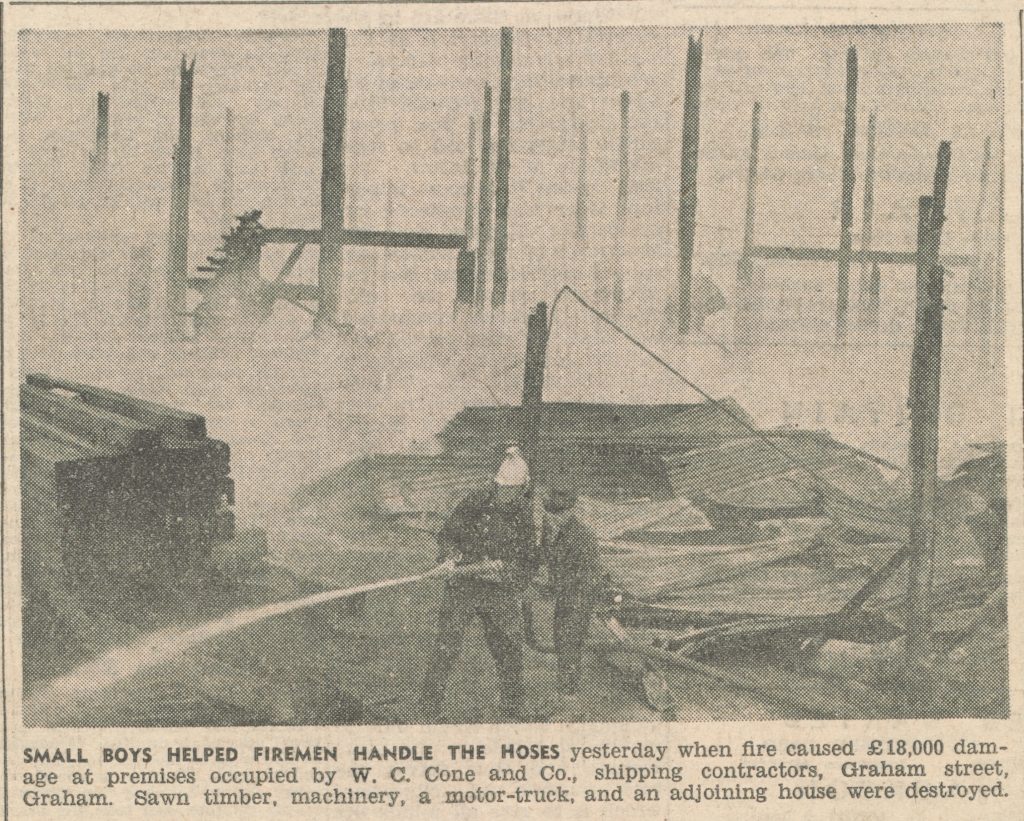
The site of the yard in Graham Street (Railway Crescent – now Swallow Street) had been occupied by W C Cone and Co. from between 1920 and 1925. Prior to this their yard was in the railway reserve close to the Port Melbourne Railway Station near the southern end of Princes Street. However, the Sands & McDougall directory fails to include any details before 1910, although Jonas Cone was first mentioned as doing ship fitting-out work in 1886. The work he performed involved fabricating wooden stalls both between decks and on the top deck for horses that were being shipped to India as remounts for the British Army.[2]
Jonas Cone arrived in the Colony of Victoria on 3 January 1853 on board the Countess of Elgin. The record of his death in 1898, aged 65, makes his birth year about 1833, and an 1841 census for Tivetshall St Margaret, Norfolk recorded Jonas Cone aged nine living with his mother Susan and two siblings: Jane aged six and Martha aged two.
Jonas and his wife, Janet McLaren had eight children with just two boys, and the elder boy, Charles Jonas died in infancy. It was their second son William Charles Cone who continued in the family business in Port Melbourne and contributed to the history of the industrial, ship-fitting and construction industry in the Port. Jonas did not live in Port Melbourne however, as his address in Melbourne first appeared in the 1870 directory as Arden Street, Hotham. When Jonas died on 28 August 1898, the death notice stated that he had died at his son’s residence of 167 Nott Street, Port Melbourne. His probate documents indicated that while he was illiterate – he signed with a cross – he had been successful in business and left an estate valued at £1093/19/- (about $189,000). William was listed at the Nott Street address in the 1900 directory, but in 1905 he had moved to Power Street, Hawthorn. The time that the Cone family spent in residence in Port Melbourne was short, while as a business, their tenure was long – from at least the 1880s until after 1970, as the 1970 directory listed W C Cone and Co. P/L, at Railway Reserve, Port Melbourne.
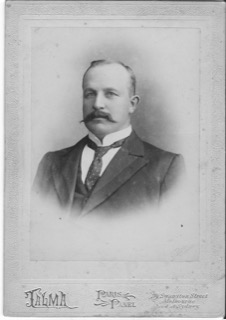
William Charles took over the business from his father Jonas, and William’s sons also became involved in the business. William married Caroline Hancock in 1889 and they had five children. Fitting out ships was an important part of the business and in 1899, W C Cone and Company advertised for fifteen carpenters with tools to work on the White Star Liner, S S Medic in Port Melbourne. The ship was on its maiden voyage to Australia and it was with some urgency that the carpentry work was required. The first return trip for the Medic was to take Australian volunteers to serve in the Boer War, and the carpentry work was to construct over 300 temporary bunks for the troops, and 220 stalls for their horses.[3] Cone and Co. also constructed a wooden gangway so that the horses could be walked on board rather than craned.[4] More ships were fitted out in a similar manner during the Boer War.
The shipping records between Melbourne and Sydney show that both Jonas and William Charles Cone made numerous return voyages in the late 1800s. According to the New South Wales archives the company W C Cone & Company was registered there on 21 July 1903. An advertisement in the Sands & McDougall directory of 1944/45 stated that the company had premises in Sydney at McMahon’s Point.
During the First World War W C Cone and Co. were regularly engaged by the Defence Department to prepare troopships for accommodating both troops and their horses.
Between 1940 and 1945, W C Cone and Co. built three wooden tug tenders: Tawe, TB10 (Cerberus), and Vigilant.[5] A year or so ago I happened on a photo on the internet of one of these boats that was for sale. The link has since disappeared so the whereabouts of the boat is now unknown. Hopefully, it has been preserved by someone who is aware of its history and important links with Port Melbourne. Fred Nicholson remembers walking by Cone’s yard as a boy in the mid 1940s and looking up at these wooden vessels while they were being built. From the limited number of advertisements in the newspapers during the years of the Second World War it appeared that work for the Defence Department was considerably less than in previous conflicts.
The story of the Cone family demonstrates how from very modest beginnings it was possible through the power of hard work and skill for anyone to achieve success and contribute to the history of Port Melbourne and its maritime connections.
References:
[1] “£18,000 Damage in Suburban Fire,” Age, 21 December 1946, p. 7.
[2] “Shipment of Horses for India,” Age, 16 July 1886, p. 5.
[3] “Inspection of the Medic,” Age, 25 October 1899, p. 7.
[4] “Embarking the Horses,” Argus, 28 October 1899, p. 13.
[5] “List of Victorian Ship Builders and Boat Builders from the Register of Australian and New Zealand Vessels,” <http://www.boatregister.net/Builders_Victoria_2010.htm>

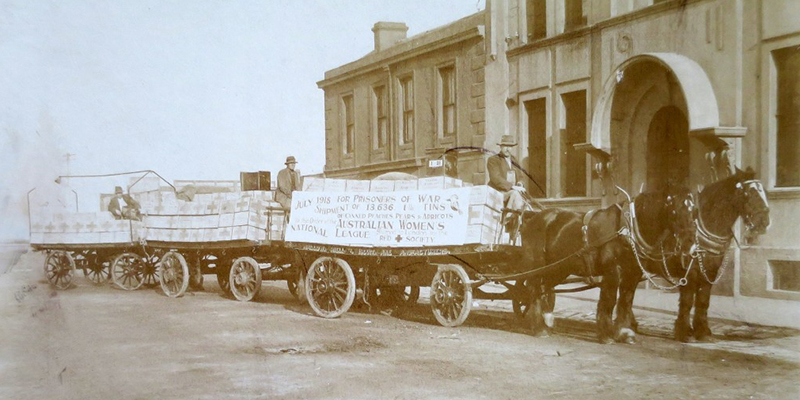
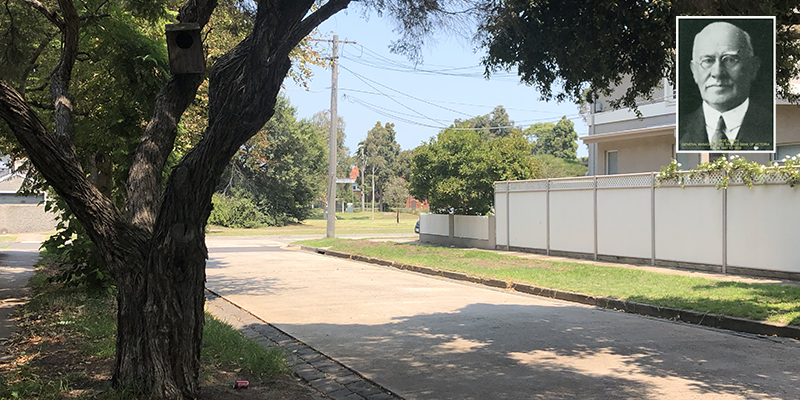
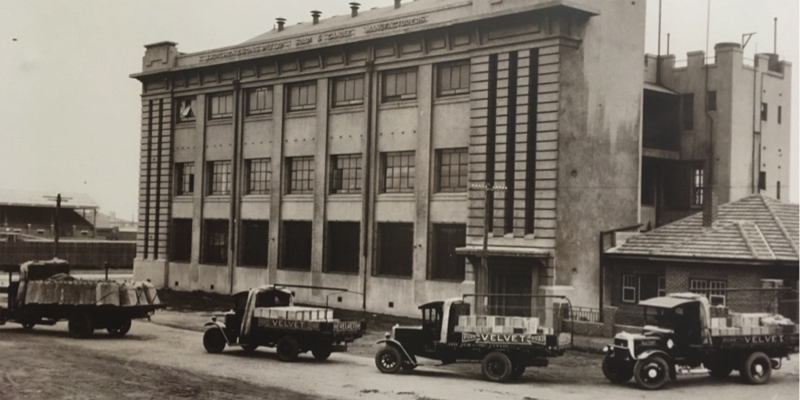
3 Comments
Charles Lawson
I remember a large boat being built in Cones and I have mentioned before I remember the fire as well it started many fires with ash being carried all around
FIONA FLEMING
Kenneth Cone grandson of Jonas was my Grandfather. If you have any information you can share it would be much appreciated as I am trying to obtain as many details as possible about my family before my sister and I travel overseas later this year to follow up on more history.
David Thompson
Thanks Fiona,
If anyone has any additional information please forward it to the Historical Society and we will pass it on to Fiona.
David Thompson